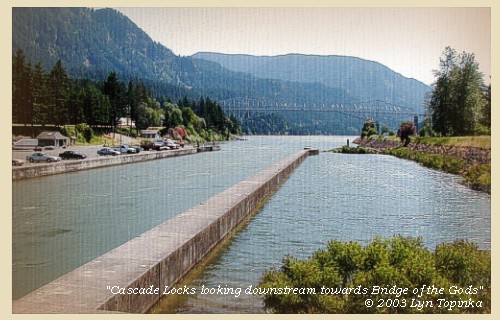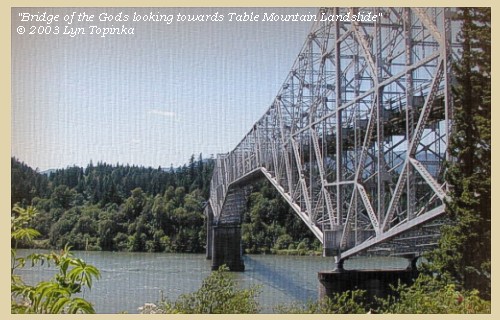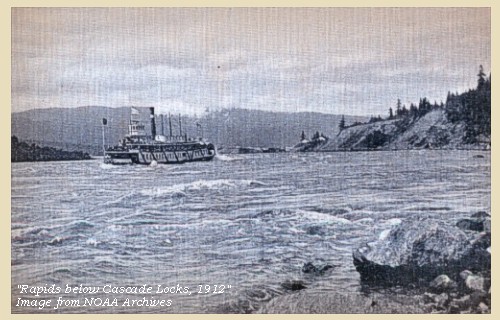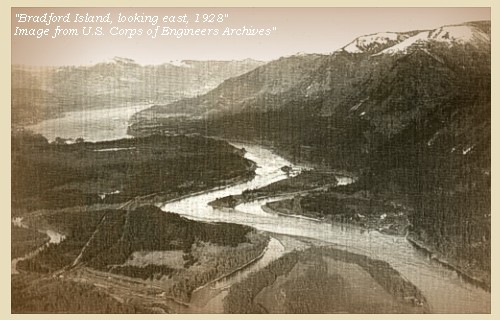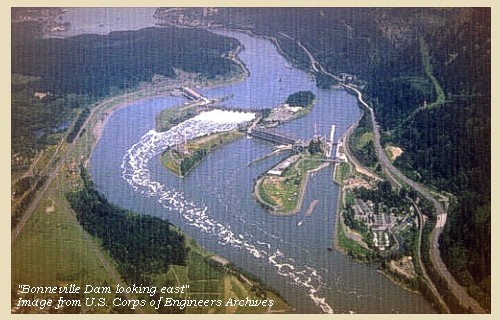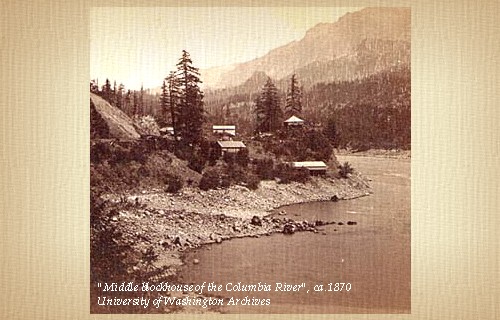The Volcanoes of
Lewis and Clark
Lewis and Clark
|
November 1, 1805 Columbia River Gorge - Cascade Locks to Bonneville - The Portage |
|
Home
The Volcanoes of Lewis and Clark Map of the Journey Volcanoes, Basalt Plateaus, Major Rivers, etc. The Volcanoes Mount Adams, Mount Hood, Mount Jefferson, Mount Rainier, and Mount St. Helens CALENDAR of the Journey October 1805 to June 1806 Along the Journey Pacific Northwest Maps - Columbia River, Volcanoes, Flood Basalts, Missoula Floods, Geology, etc. The Corps of Discovery The Journey of Lewis and Clark About the Reference Materials The Journals, Biddle/Allen, DeVoto, Gass, Moulton, Topo Maps, and others USGS Lewis and Clark Links Links to USGS Websites highlighting the Lewis and Clark Journey Resources Publications Referenced and Websites Visited |
PREVIOUS
October 31 "Lower Falls of the Columbia", Cascade Locks - Preparing to Portage |
November 1
Columbia River Gorge, Cascades Locks to Bonneville - The Portage "Lower Falls of the Columbia" and Cascade Locks, Bridge of the Gods, Rapids below Bridge of the Gods, Bradford Island, Bonneville Dam, Fort Rains, Fort Cascades, and North Bonneville |
CONTINUE
November 2 Columbia River Gorge, Beacon Rock to Rooster Rock |
|
To the Pacific - November 1805
Columbia River Gorge - Cascade Locks to Bonneville - The Portage |
| The Lewis and Clark camp of October 30 and 31, 1805, was on an island on the Washington side of the Columbia River, just north of today's Cascade Locks and Bridge of the Gods. The island is now under the waters of Bonneville Dam. The men spent March 31, 1805 preparing to portage around these "Lower Falls of the Columbia". |
| Friday, November 1, 1805 |
| The morning was cool and the wind high from the northeast. The Indians who arrived last night, took their empty canoes on their shoulders and carried them below the great shoot ["Lower Falls of the Columbia", today the location of the Cascade Locks], where they put them in the water and brought them down the rapid, till at the distance of two and a half miles they stopped to take in their loading, which they had been afraid to trust in the last rapid, and had therefore carried by land from the head of the shoot. |
| "... Set all hands packing the loading over th portage which is below the Grand Shutes and is 940 yards of bad way over rocks & on Slipery hill Sides The Indians who came down in 2 Canoes last night packed their fish over a portage of 2 1/2 miles to avoid a 2d 'Shute'. four of them took their canoes over the 1st portage and run the 2d Shute ..." [Clark, November 1, 1805] |
| After their example we carried our small canoe, and all the baggage across the slippery rocks, to the foot of the shoot. The four large canoes were next brought down, by slipping them along poles, placed from one rock to another, and in some places by using partially streams which escaped along side of the river. We were not, however, able to bring them across without three of them receiving injuries, which obliged us to stop at the end of the shoot to repair them [In 1926 the Bridge of the Gods was constructed at the base of the Cascade Locks area]. |
| At this shoot we saw great numbers of sea-otters [seals]; but they are so shy that it is difficult to reach them with the musket: one of them that was wounded to-day sunk and was lost. Having by this portage avoided the rapid and shoot of four hundred yards in length, we re-embarked, passed at a mile and a half the bad rapid [below today's Bridge of the Gods] opposite to the old village on the right, |
| and making our way through the rocks, saw the house just below the end of the portage; the eight vaults near it; and at the distance of four miles from the head of the shoot, reached a high rock, which forms the upper part of an island [Bradford Island] near the left shore. |
| Between this island [Bradford Island] and the right shore we proceeded, leaving at the distance of a mile and a half, the village of four houses on our right, [today Bonneville Dam spans Bradford Island] and a mile and a half lower came to the head of a rapid near the village on the right. |
| Here we halted for the night, [near the towns of Fort Rains and North Bonneville] having made only seven miles from the head of the shoot. During the whole of the passage the river is very much obstructed by rocks. |
| The island [Bradford Island], which is about three miles long, reaches to the rapid which its lower extremity contributes to form. The meridian altitude of to-day gave us the latitude of 45o 44' 3" north. ...... |
|
|
|
The Camp - November 1, 1805:
Washington side of the Columbia River, downstream of today's Bonneville Dam, near the towns of Fort Rains and North Bonneville. There is a plaque on Bradford Island commemorating this campsite. |
| Home | Previous | Continue |
If you have questions or comments please contact: GS-CVO-WEB@usgs.gov
June/July 2004, Lyn Topinka
The Volcanoes of Lewis and Clark Home Page | CVO Home Page


